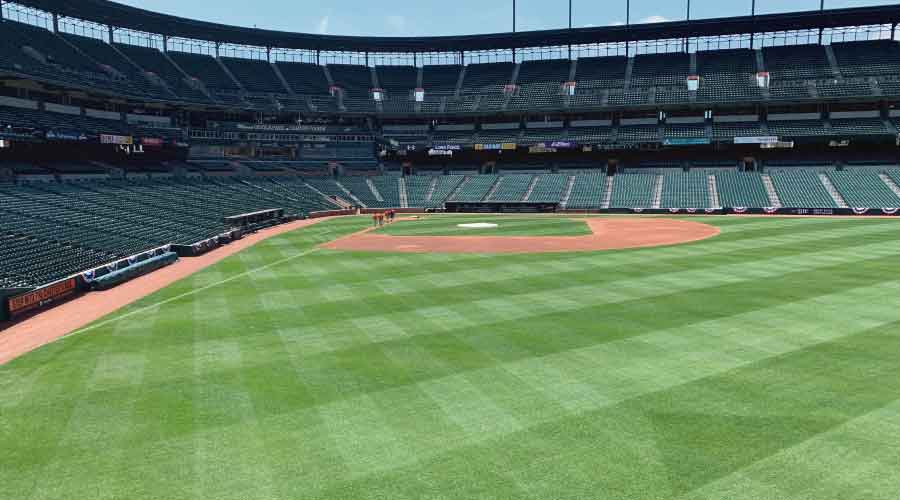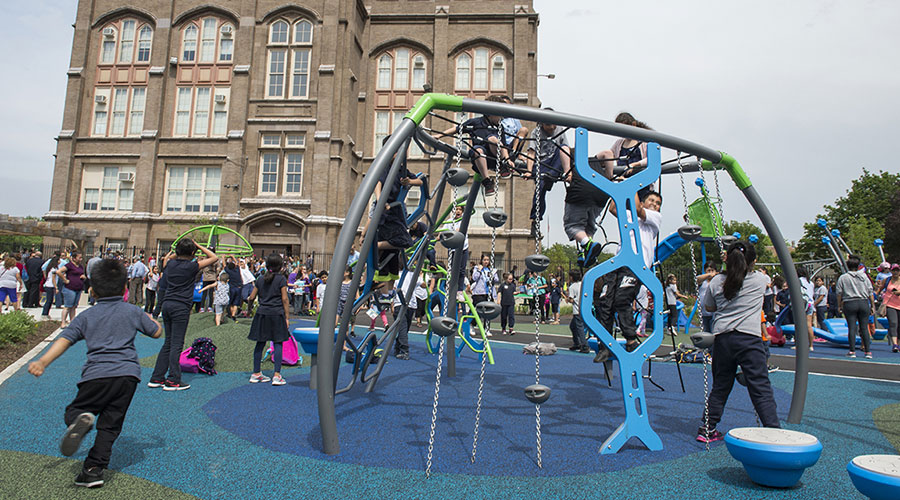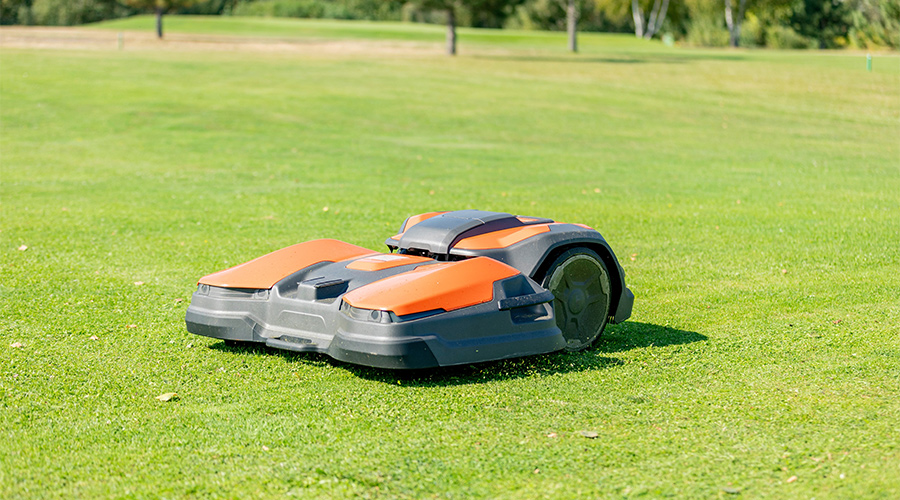Top Mowing Strategies for Athletic Fields
Grounds managers at three sports facilities tackle challenges related to turf types, climates, and schedules.
By Dave Lubach, managing editor
No one-size-fits-all solution exists for grounds managers responsible for mowing athletic fields. Whether the turf is in a professional sports stadium, a school district or municipality with a variety of sports facilities, the managers in charge of the fields have a host of challenges on their plates, including mowing schedules, maintaining safe conditions, and keeping the turf healthy during long and demanding seasons.
By taking a closer look at challenges facing grounds managers with three different types of facilities in different parts of the country, it becomes clear that resourcefulness is critical in developing successful mowing strategies.
Mile High Mowing
The North Area Athletic Complex inside the Jefferson County School District outside Denver hosts soccer games every weeknight during the season. The adjacent football field can host up to five football games in one weekend.
Six high schools sharing the fields and scheduling mowing and field maintenance can be a challenge, says Sun Roesslein, the sports stadium’s manager.
“Our windows of opportunity to any kind of field maintenance and mowing are pretty limited and pretty well set,” she says. “It definitely takes some planning and a lot of just, ‘Get out there and get it done.’”
Roesslein and one other full-time employee maintain 14 acres at the complex in addition to the fields. They use a reel mower on the fields that is set for the different cuts (1 3/4 inches for the football field and 11/2 inches for the soccer field). The in-season schedule plays a significant role in when they can mow and maintain both fields.
“Typically, on a Monday after we’ve had a long weekend of games, it is usually a sweep up the debris day,” Roesslein says. “We clean up the surface, or we use a rotary mower with a bag on it again so we can collect loose material and organic matter. It also helps to stand up the grass a little bit so we get better airflow movement. Then Wednesday would be a mow right before we paint. Then we would stay off it on Thursday and then mow again Friday to kind of clean up footprints and make the stripes look sharp again.”
The soccer field offers Roesslein’s staff more flexibility since games are played more regularly, but both fields are still often mowed three-four times a week at the peak of growing season.
Since the fields endure plenty of wear and tear during the week, Roesslein says mowing sessions are a good time to check for ruts and other turf damage.
“Mowing is really the best time to scout the field for issues,” she says. “Whether there’s a low spot or bare spot or an irrigation issue or something that just doesn’t look right out there, you can get off the machine and take a closer look. Maybe it’s the start of some sort of disease that will affect the surface health. When mowing, you’re going to see every inch of those fields.”
On the Ball in Baltimore
As one of only two female head groundskeepers at the major league level, Nicole Sherry spends many hours ensuring that the Camden Yards field in Baltimore meets the expectations of fans and Major League Baseball. But while appearance is important for the home of the Orioles, it’s hardly her only concern on game days.
“The biggest thing when it comes to mowing at a professional level ball field, everything you do out there affects the ball roll,” Sherry says. “We mow specifically in patterns for that ball roll instead of just aesthetics. Aesthetics is key, but it’s really about the play of the ball and how that pattern is not going to make the ball snake at all.”
Using seven mowers, including three ride-ons and four walk-behinds, Sherry’s crew mows the field daily from mid-April until late June before moving to every other day during the hottest months, July and August. The field is sodded with Kentucky Bluegrass, which Sherry says can not be cut to less than a 1-inch height without threatening the health of the grass.
“Mowing has its challenges in some ways, because No. 1 is the height of cut in professional facilities,” she says. “You need to cut it short enough that whatever kind of play is out there the athletes are going to be comfortable in, but you don’t want it cut too short where you risk killing the grass. Then you don’t want to keep it too long because disease pressure can set in, too, and if you get certain turf grass diseases, it can really wipe out the entire complex.”
Tennessee: A Variety of Venues
Managing a diverse selection of athletic facilities means James Bergdoll requires a number of different solutions for mowing options.
Bergdoll, the director of park maintenance for the City of Chattanooga, Tennessee, manages sports fields that range from higher-end tournament complexes that host softball, baseball and soccer games to lower-level youth sports fields and a stadium that hosts the University of Tennessee at Chattanooga baseball team. The city also manages two 18-hole golf courses that require a separate maintenance staff and equipment.
With so many venues needing attention, Bergdoll handles each field with tiered priorities.
“It all depends on the level of usage and the need, so there’s different priorities,” says Bergdoll, who is president of the Sports Field Management Association, a national organization of sports field managers. “With the different sports, you’re going to have a different desire of how that grass needs to be managed, and that can also affect how the game’s played. If you’re looking at a youth recreational field, it probably isn’t as important how the grass is managed as opposed to a higher-level tournament facility or college use.”
The city also relies on different sources to mow the fields. The fields are maintained by a mix of city employees, youth sports groups that use the fields, and third-party contractors, who are responsible for 90 percent of the city’s park mowing.
“They are out there using the latest and greatest in zero-turn mowing technology,” Bergdoll says of the contractors.
While he uses the contractors extensively, there are benefits and challenges in using a third party for mowing.
“We’re not having to coordinate staff and have them be in the right place at the right time,” Bergdoll says. “That’s the contractors’ deal, so they get the headache of maintaining the equipment and making sure they have the staff to operate the equipment and keep our expectations up, which is the bonus.
“But on the downside, you do lose a little bit. The contractor is paid by the site, so they’re going to get as many sites done as they can. The level of care may not be that of a daily park maintenance staff, so it’s just trying to manage those expectations. If you’re not satisfied with the work, we call them out and make them do the job as expected.”
Another potential issue with contracting out mowing the fields is the threat of bringing in unwanted clippings from another site, which could damage the turf.
“With athletic fields or more highly maintained areas, you don’t know where a contractor was cutting before your site and if he cleaned his mowing unit, and weed seeds or other grass varieties that you may not want can potentially be brought in,” Bergdoll says. “I see that we have more weed pressure in areas that we may not (before) because we’re using the contractor there.
“But there’s the benefit of not spending, buying and purchasing equipment and having the extra staff. We’ve been able to increase the capacity of what our staff can do in the days rather than being out there mowing eight hours a day. We can focus on other detailed work.”
Dave Lubach is managing editor for the facilities market. He has seven years of experience covering facilities management and maintenance.
Related Topics:












